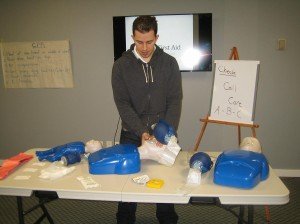
Out of all the CPR training providers in the US, few offer quality courses at very affordable rates. With Los angeles CPR, you don’t have to worry about the price or the quality of training you’re going to receive. We make sure that all our instructors are certified rescuers before we allow them to teach trainees. All of our courses are certification courses as well; as long as you complete all our requirements you will receive a CPR training certificate.
Enrollment at Los Angeles CPR
Enrollment is quite simple as well! We want our trainees to have the best learning experience at Los Angeles CPR so we have three different channels for them to sign up for training. The first and by far the most popular is through the internet. Trainees can send an e-mail or use the online application form to sign up. These options can be accomplished at any time of the day. The other two channels have to be done during business hours: telephone and in person.
Studying CPR: Basic or Advanced Life Support
When you decide that you want to enroll in CPR training, you have to choose what program you want to take. At Los Angeles CPR, we have to kinds of programs: basic and advanced. If you do not work or are not involved in healthcare, you can take a basic course, while healthcare professionals often opt for the more advanced courses.
Basic Life Support
Heartsaver CPR has two courses, one for the public (lasts 4 hours) and one for HCPs (lasts 4.5 hours). The curriculum covers one-person rescue, first aid, and automated external defibrillation. While the two courses have the same curriculum, our trainers adjust certain terms and topics when teaching lessons to people who are not familiar with common healthcare terms and topics.
Basic Life Support for HCPs lasts 4.5 hours, with a re-certification course that lasts 4 hours. It teaches students about one and two-person rescue and the latest Basic Life Support guidelines from the AHA. It also involves first aid and defibrillation training.
Advanced Life Support
There are only two ALS courses offered, one for the management of adult cases (ACLS) and the other for the management of pediatric cases (PALS). ALS courses can only be taken by allied health professionals who are allowed to plan and administer medical management to victims of cardiac arrest. Medical management can involve the use of medication, diagnostics, and equipment to help stabilize the victim.
The statistics
When it comes down to it, four out of five heart attacks happen at home. That is a whopping 88 percent out of the total cases of cardiac arrest in the US. Out of these, only 32 percent receive CPR from a bystander. Bystander CPR can double to triple the survival rate of the victim if CPR is done correctly. When you train in CPR, you can save someone’s life – not just anyone, but someone’s mother, father, wife, husband, or child.
